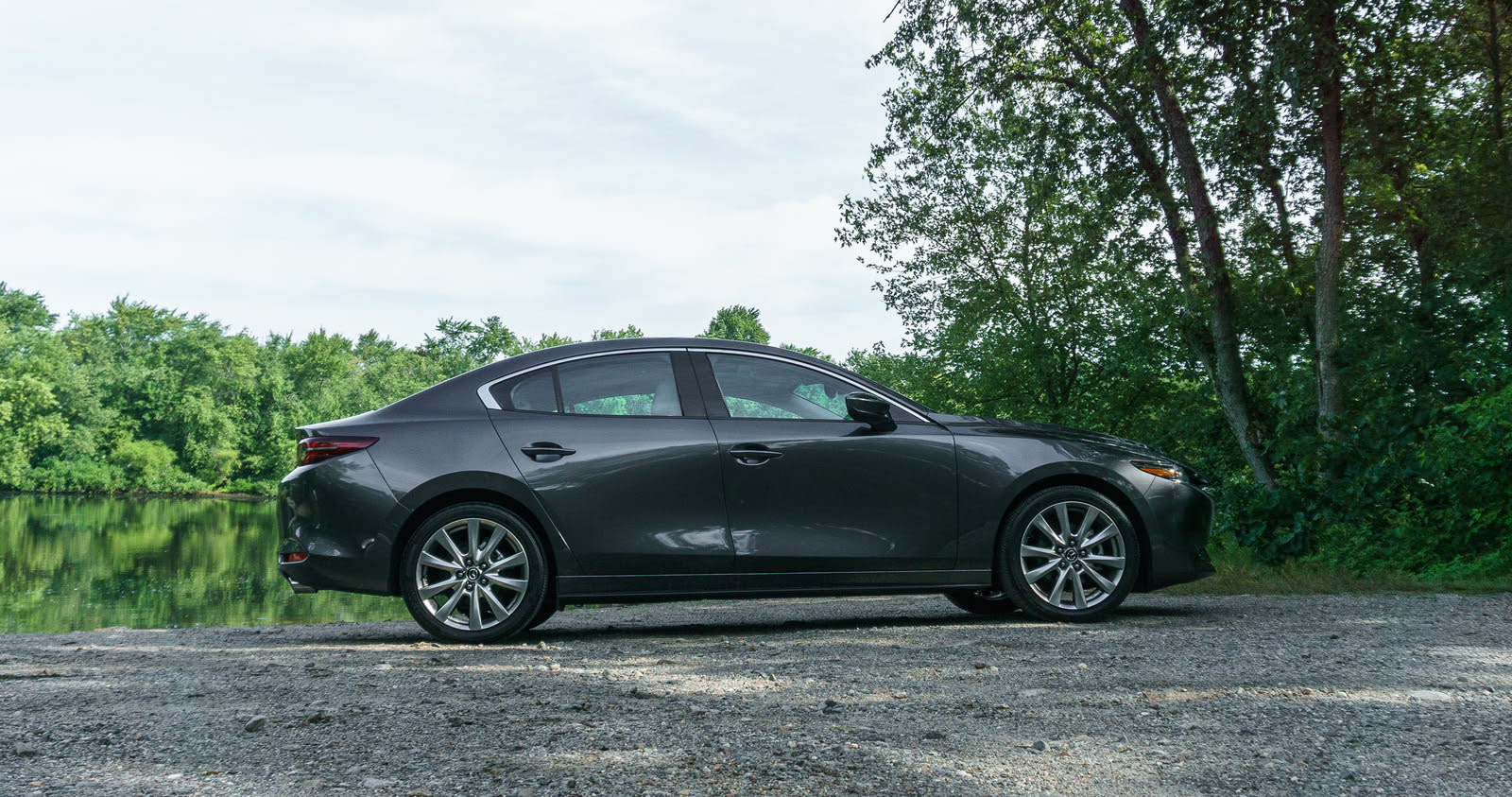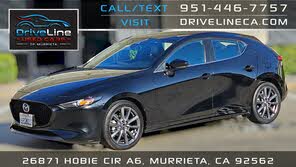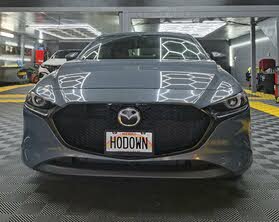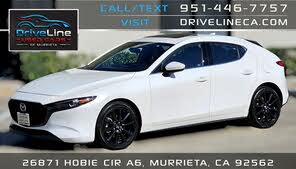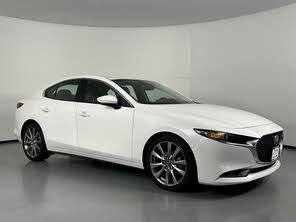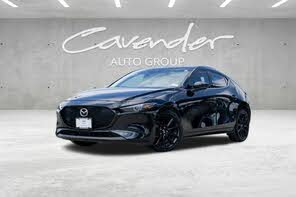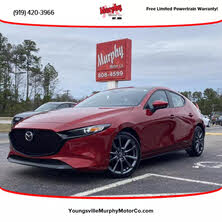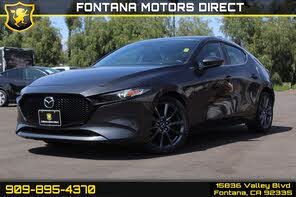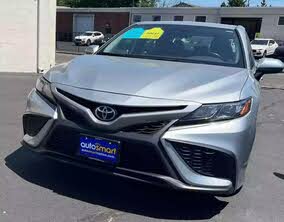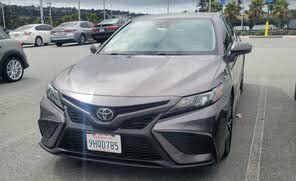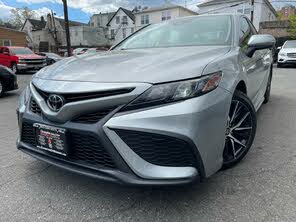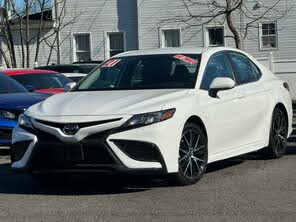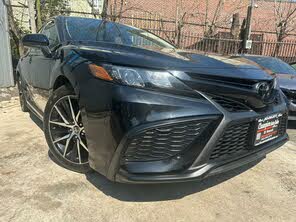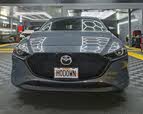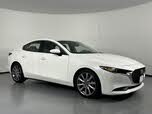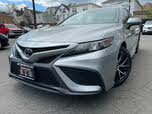2020 Mazda MAZDA3 vs 2021 Toyota Camry
Overview | |
MSRP$21,500 | MSRP$25,045 |
Average price$20,319 | Average price$23,579 |
Listings246 | Listings3094 |
Ratings & Reviews | |
User Reviews | User Reviews |
Expert reviews7.8 out of 10 | Expert reviews7.8 out of 10 |
Pros
| Pros
|
2020 Mazda MAZDA3 Reviews SummaryMazda redesigned the Mazda3 in 2019, taking what was already one of the best-looking compact cars on the market, and attempting to dress it up even further. The goal was to elevate the brand into near-luxury territory. While the 2020 Mazda3 may not compete on the same plane as a Mercedes-Benz CLA-class or a BMW 2 Series, it feels undeniably premium when benchmarked against more mass-market competitors. | |
2021 Toyota Camry Reviews SummaryThe Toyota Camry has long been many new-car buyers’ default choice—but not because it’s interesting. Reliability and practicality have traditionally been the Camry’s strengths, not sportiness or style. Toyota tried to change that for the 2018 model year, when the Camry was last redesigned. The current-generation Camry adopted more extroverted styling, and engineers tried to make the driving experience more exciting, too. While Toyota’s approach has changed, the Camry still competes against the same array of midsize sedans, including the Honda Accord, Hyundai Sonata, Mazda 6, Nissan Altima, Subaru Legacy, and Volkswagen Passat. Changes for the 2021 model year include subtle styling tweaks, new infotainment displays, an upgrade to the Toyota Safety Sense 2.5+ (TSS 2.5+) package of driver aids, some changes to the dashboard trim, and the discontinuation of the Camry L trim level. That leaves the Camry LE as the new base trim level. The Camry offers buyers more choices than many rivals, encompassing three powertrains (inline-four, V6, and hybrid), six trim levels (LE, XLE, SE, SE Nightshade Edition, XSE, and TRD), and the choice of front-wheel drive (FWD) or all-wheel drive (AWD). Our test car was an AWD SE Nightshade Edition, positioned close to the middle of the lineup. | |
No video found | |
Popular Features & Specs | |
Engine2.5L 186 hp I4 | Engine2.5L 203 hp I4 |
Drive TrainFWD | Drive TrainFWD |
Seating Capacity5 | Seating Capacity5 |
Horsepower186 hp @ 6000 rpm | Horsepower |
MPG City27 | MPG City28 |
MPG Highway36 | MPG Highway39 |
Engine | |
Engine Name2.5L 186 hp I4 | Engine Name2.5L 203 hp I4 |
Torque186 lb-ft @ 4000 rpm | Torque |
Horsepower186 hp @ 6000 rpm | Horsepower |
DrivetrainFWD | DrivetrainFWD |
Fuel Economy | |
MPG City27 | MPG City28 |
MPG Highway36 | MPG Highway39 |
Interior | |
Seating Capacity5 | Seating Capacity5 |
Safety | |
Front Crash Overall5 | Front Crash Overall5 |
Side Crash Overall5 | Side Crash Overall5 |
Dimensions & Capacity | |
Cargo Space13.2 cu ft | Cargo Space15.1 cu ft |
Curb Weight3071 lbs | Curb Weight3310 lbs |
Height56.9 in | Height56.9 in |
Length183.5 in | Length192.1 in |
Width70.7 in | Width72.4 in |
Wheelbase107.3 in | Wheelbase111.2 in |
Maximum Payload1008 lbs | Maximum Payload925 lbs |
Number of doors4 | Number of doors4 |
Overview | ||
MSRP | $21,500 | $25,045 |
Average price | $20,319 | $23,579 |
Listings | ||
Ratings & Reviews | ||
User reviews | 5.0 | 4.5 |
Expert reviews | 7.8 out of 10Read full review | 7.8 out of 10Read full review |
Pros & cons | Pros
| Pros
|
Summary | Mazda redesigned the Mazda3 in 2019, taking what was already one of the best-looking compact cars on the market, and attempting to dress it up even further. The goal was to elevate the brand into near-luxury territory. While the 2020 Mazda3 may not compete on the same plane as a Mercedes-Benz CLA-class or a BMW 2 Series, it feels undeniably premium when benchmarked against more mass-market competitors. | The Toyota Camry has long been many new-car buyers’ default choice—but not because it’s interesting. Reliability and practicality have traditionally been the Camry’s strengths, not sportiness or style. Toyota tried to change that for the 2018 model year, when the Camry was last redesigned. The current-generation Camry adopted more extroverted styling, and engineers tried to make the driving experience more exciting, too. While Toyota’s approach has changed, the Camry still competes against the same array of midsize sedans, including the Honda Accord, Hyundai Sonata, Mazda 6, Nissan Altima, Subaru Legacy, and Volkswagen Passat. Changes for the 2021 model year include subtle styling tweaks, new infotainment displays, an upgrade to the Toyota Safety Sense 2.5+ (TSS 2.5+) package of driver aids, some changes to the dashboard trim, and the discontinuation of the Camry L trim level. That leaves the Camry LE as the new base trim level. The Camry offers buyers more choices than many rivals, encompassing three powertrains (inline-four, V6, and hybrid), six trim levels (LE, XLE, SE, SE Nightshade Edition, XSE, and TRD), and the choice of front-wheel drive (FWD) or all-wheel drive (AWD). Our test car was an AWD SE Nightshade Edition, positioned close to the middle of the lineup. |
Video | No video found | |
Popular Features & Specs | ||
Engine | 2.5L 186 hp I4 | 2.5L 203 hp I4 |
Drive Train | FWD | FWD |
Seating Capacity | 5 | 5 |
Horsepower | 186 hp @ 6000 rpm | |
MPG City | 27 | 28 |
MPG Highway | 36 | 39 |
Engine | ||
Engine Name | 2.5L 186 hp I4 | 2.5L 203 hp I4 |
Torque | 186 lb-ft @ 4000 rpm | |
Horsepower | 186 hp @ 6000 rpm | |
Drivetrain | FWD | FWD |
Fuel Economy | ||
MPG City | 27 | 28 |
MPG Highway | 36 | 39 |
Interior | ||
Seating Capacity | 5 | 5 |
Safety | ||
Front Crash Overall | 5 | 5 |
Side Crash Overall | 5 | 5 |
Dimensions & Capacity | ||
Cargo Space | 13.2 cu ft | 15.1 cu ft |
Curb Weight | 3071 lbs | 3310 lbs |
Height | 56.9 in | 56.9 in |
Length | 183.5 in | 192.1 in |
Width | 70.7 in | 72.4 in |
Wheelbase | 107.3 in | 111.2 in |
Maximum Payload | 1008 lbs | 925 lbs |
Number of doors | 4 | 4 |

By: CarGurus + AI
This car comparison has been created with using generative AI. It is based entirely on CarGurus expert review content, ratings and data, and leverages our extensive library of hands-on product tests to create thousands of unique comparisons to help shoppers choose the right car.
